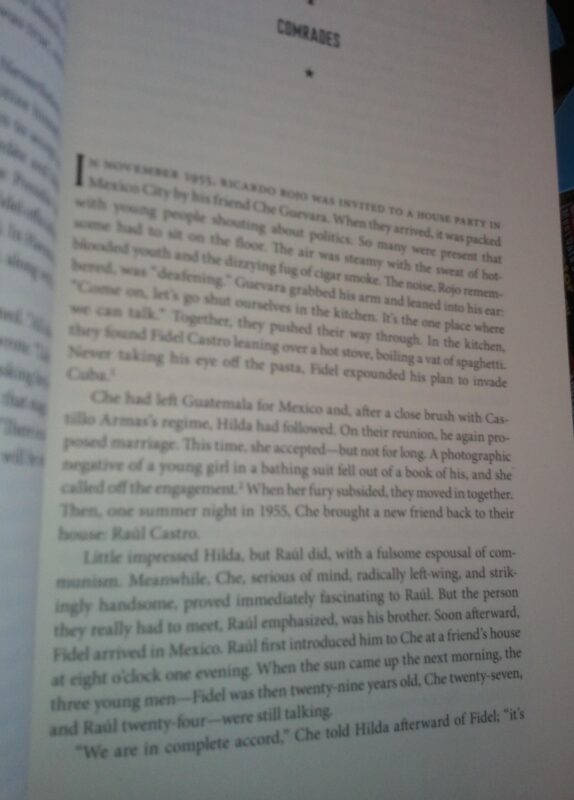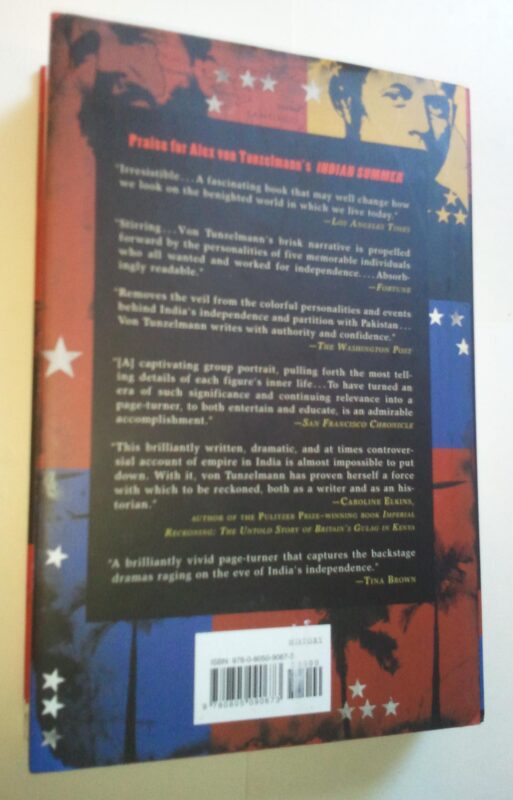Red Heat Conspiracy Murder and the Cold War in Caribbean HC Alex Von Tunzelmann
$29.99
Description
Red Heat: Conspiracy, Murder, and the Cold War in the Caribbean Hardcover by Alex Von Tunzelmann (Author)
The Caribbean crises of the Cold War are revealed as never before in this riveting story of clashing ideologies, the rise of the politics of fear, the machinations of superpowers, and the brazen daring of the mavericks who took them on.
During the presidencies of Eisenhower, Kennedy, and Johnson, the Caribbean was in crisis. The men responsible included, from Cuba, the charismatic Fidel Castro, and his mysterious brother Raúl; from Argentina, the ideologue Che Guevara; from the Dominican Republic, the capricious psychopath Rafael Trujillo; and from Haiti, François “Papa Doc” Duvalier, a buttoned-down doctor with interests in Vodou, embezzlement and torture.
Alex von Tunzelmann’s brilliant narrative follows these five rivals and accomplices from the beginning of the Cold War to its end, each with a separate vision for his tropical paradise, and each in search of power and adventure as the United States and the USSR acted out the world’s tensions in their island nations. The superpowers thought they could use Cuba, Haiti, and the Dominican Republic as puppets, but what neither bargained on was that their puppets would come to life. Red Heat is an intimate account of the strong-willed men who, armed with little but words and ruthlessness, took on the most powerful nations on earth.
Hardcover: 464 pages
“…a mesmerizing, Conradian tale where the truth is almost too dark to bear. A remarkably gripping popular history.”—Kirkus
“Von Tunzelmann’s diligent work will widen the eyes of cold war buffs.”–Booklist
This book scintillates and resonates. One finds oneself sometimes shaking one’s head at the folly of Kennedy and the CIA – but then laughing out loud almost at their Keystone Cops antics. Von Tunzelmann’s argument is that America helped cause that which is sought to prevent – the rise of a Communist Cuba. Her argument is a persuasive one.
But, as well as argumentative history, Red Heat is a tour de force of narrative history – fizzing with stories of espionage, sex, sadism and statecraft. Refreshingly the author has not sacrificed her sense of decency or sense of humour in dealing with the story (Red Heat is perhaps the funniest serious history book I have read in a while, in terms of the author’s asides, chapter headings and use of piquant quotations). Kennedy is no saint, Che Guevara no martyr.
This is a splended book, which should re-engage those who remember the age – and entertain and inform those who missed it.
In this study of American involvement in Caribbean politics during the turbulent 50s and 60s, von Tunzelmann offers her readers a more intensive view of events and personalities shaping this period than is normally available. As a relatively new historian, she has taken upon herself the complex task of determining why American involvement grew in this region over several decades and how it played through in affecting US foreign policy in other parts of the world like Vietnam. While much of the detail she uses in her book is well known, her use of them to define the scope of American influence in countries like Haiti, Cuba and the Dominican Republic is very enlightening. There is a lot of respect – not fawning admiration – for how Castro steered a survival course between his American-backed opponents. The American trade embargo of Cuba comes in for considerable criticism as being economically ineffective and politically short-sighted. Over the long haul, the US stubbornly clung to the notion that there had to be a regime change in Cuba at all costs. As a result, successive administrations used the same hard-headed, draconian tactics to keep the region locked in poverty and instability.
Here are some reasons why anyone might want to take on this very scholarly study:
1) It has a very defensible thesis as to why the Americans increased its influence in the Caribbean in a big way during the Cold War and where it eventually led to in other parts of the globe;
2) It acquaints the reader with some of the grubbier and more despicable arrangements Washington entered into with dictators like Duvalier and Trujillo in order to maintain a presence in this sphere and fight communism in Cuba;
3) The author provides some well-supported analysis to assist the reader in connecting the dots between the various big players in this intriguing drama. While American presidents like Eisenhower and Kennedy, dictators like Castro, Duvalier, and Trujillo receive the lion’s share of attention, other secondary officials like Che, Rusk, Bundy, Raoul Castro, Khrushchev, Harold Macmillan, Batista, the Dulles brothers, various Mafia members, and Adlai Stevenson receive more than passing attention;
4) Von Tunzelmann lays out the whole seedy record of events that demonstrates how the US was willing to abandon any high principles of international engagement in an attempt to defeat Castro and the Cuban revolution. Encouraging assassination, allowing money laundering, backing corrupt and evil dictators, and funding paramilitary groups were all part of the American plan for destabilizing a region in order to maintain its control over the region’s resources like sugar and bauxite.
5) She does a meticulously accurate job on covering the two main geopolitical dramas – the Bay of Pigs and the Cuban Missile Crisis – and offers some very helpful insights as to Castro’s role.
Alex von Tunzelmann: Red Heat – Conspiracy, Murder, and the Cold War in the Caribbean, Henry Holt and Company, New York, 2011.
Alex von Tunzelmann was educated in Oxford and lives in London. Her book deals mainly with the last 100 years of Cuba, Haiti, and the Dominican Republic, the history of brutal dictatorships, revolutions and imperialist (US) interference. Her view is refreshingly objective. She neither spares criticism of the main culprits (Batista, Papa Doc, Trujillo, Eisenhower, the Kennedy and Castro brothers) nor does she forget the fate of the people. Without the anticommunist phobia of the time, in particular in the USA, history in all those countries probably would have taken a different course.
Most importantly, of course, is the course the Cuban revolution took. Without US ignorance and anticommunist bias Fidel might not have followed the communist route favored by his younger brother, Raul, and by Ché Guevara. Fidel is described as a radical social democrat who always kept his distance to the Communist Party, which was somehow complicit in the Batista dictatorship. He tried not to antagonize the USA in any way but was nevertheless pushed by the Eisenhower administration to lean more on his more leftist fellow revolutionaries. The Kennedy brothers played an even more hawkish role, in particular Robert. They inherited the Bay of Pigs campaign, lost it, and tried to take revenge for this loss by isolating Cuba in the hemisphere (OAS), putting an economic boycott in place, by planning Castro’s murder and the overthrow of his then popular regime. JFK only felt vindicated after he achieved a success in the missile crisis against Nikita Krushchev. Robert, who led the murder and putsch campaigns against Fidel, later even admitted to have made major mistakes towards Cuba. It was too late; Lyndon B. Johnson continued the hostile policies towards the island, although he shifted his main concern to the war in Vietnam.
The fate of Hispaniola, the island that is divided into Haiti and the Dominican Republic, is also covered in its gruesome details. François Duvalier (aka Papa Doc) and Rafael Trujillo are described as brutal maniacs who tortured and murdered thousands of their fellow countrymen, even people who were close to them and defected or who were in their way otherwise. Both of them relied on close advisors, who turned out to be terrible henchmen: Clément Barbot, who created the special force of cagoulards, the Tonton Macoutes, and Johnny Abbes respectively. The US administrations were aware of the terrible policies of these two maniacs and tried to get rid of them. However, the two dictators managed to play the anticommunist card effectively over and over again and convinced their US benefactors of the imminent communist threats in their countries. Even when Trujillo was assassinated the regime was not dismantled. Joaquin Balaguer took over but eventually was replaced by a populous democrat, Juan Bosch. The US didn’t like this anticommunist social democrat either and helped to topple his reformist government by a strict conservative regime. President Johnson even decided to violate OAS rules and invaded the country, causing more than 1500 deaths among civilians.
Duvalier survived all attempts to get rid of him and was able to install his son, Baby Doc, as the new national “leader”. Even his henchmen turned against him, though unsuccessfully, and tried to topple him by force. Duvalier started as a mild mannered person with moderate ideas but once in power he changed and embraced racist policies against all whites and against all “mulattos”. His base of power became a paramilitary force out of the black ghettos, the “Tontons Macoutes”, a secretive group wearing masks when they raided the homes of their opponents or when they went on rampages in the open air. They tortured and killed without ever being held accountable. Papa Doc’s political ideology was undetermined, neither right nor left. His cabinet included people from both ends of the political spectrum. However, his racism, his use of Haiti’s Voodoo tradition, and his pronounced anti-communism puts him rather in the fascist realm. Tunzelmann points out that Duvalier was not a genuine Voodoo adherent, using this tradition only for his own purposes. For the Voodoo component in Haiti’s history she refers to a website […] where the validity of Haiti’s founding legend is discussed.
In sum, Alex von Tunzelmann’s book is a meticulous recount of the events in the Caribbean, full of details, a must read for anyone interested in the last century’s history of that region.
978-0-8050-9067-3
Henry Holt and Company. Near mint condition. 1st edition.
Related products
-

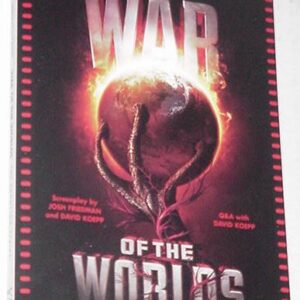
War of the World Shooting Script Josh Friedman David Koepp
$29.99 Add to cart -
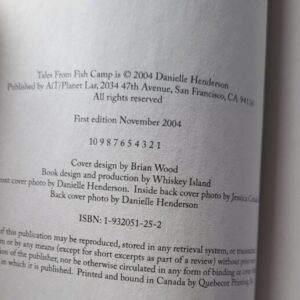

Tales From The Fish Camp TP NM OOP Danielle Henderson
$69.99 Add to cart -
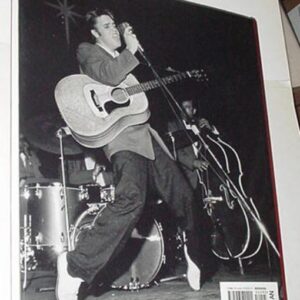

Elvis A Celebration in Pictures HC Warner Charles Hirshberg Life Magazin Presley
$59.99 Add to cart -


Norton Anthology American Literature 7th Edition SC Edgar Allan Poe Herman Melville
$49.99 Add to cart


